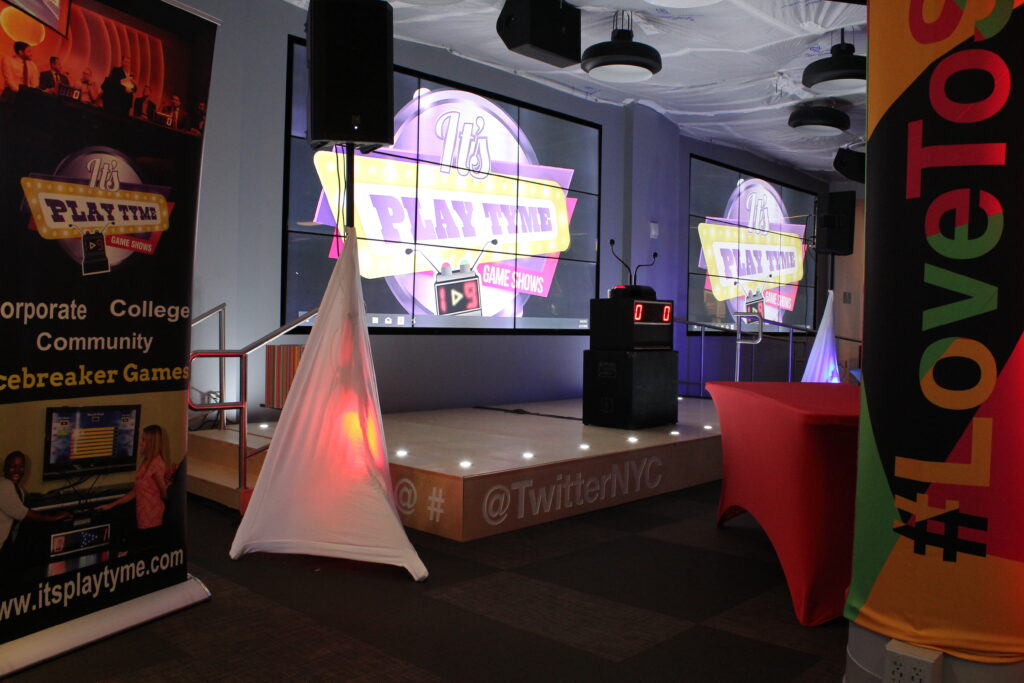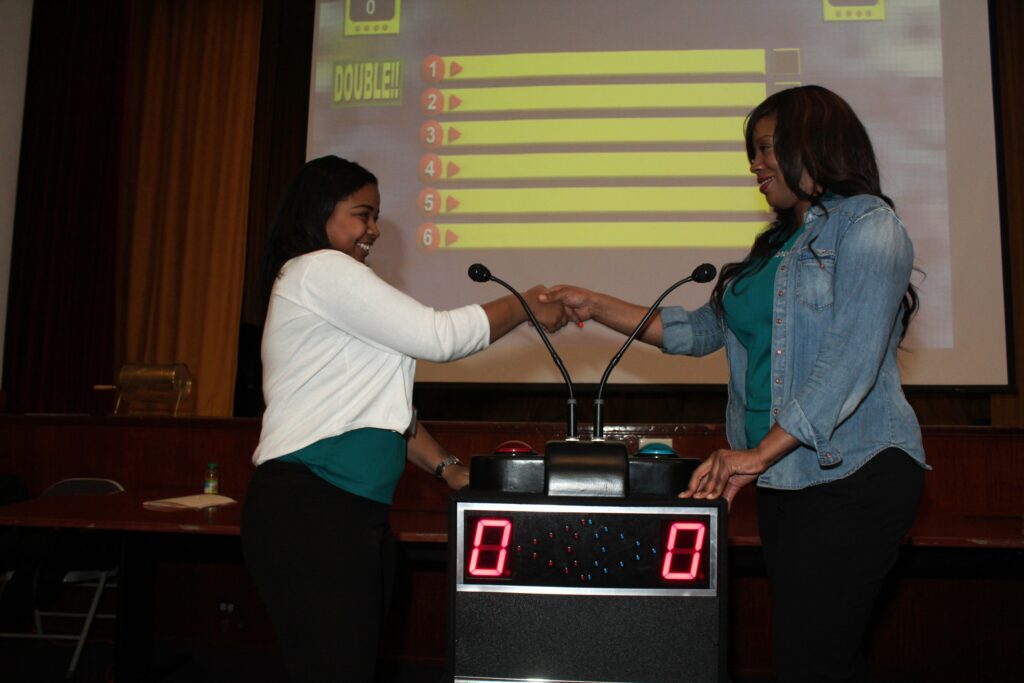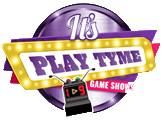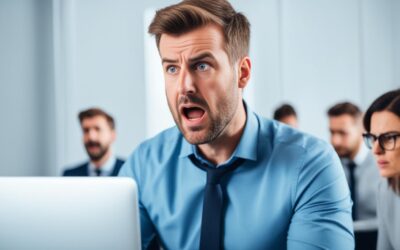Fun engaging games for employee training and development. Are you tired of the same old training methods that fail to engage your employees?
Look no further than employee training and development games. These interactive and fun activities have the power to transform workplace learning, boost productivity, and enhance morale.
From team building games to interactive training games, incorporating game-based activities into your training and development programs can significantly improve information retention and active participation.

>>>>Book Now! for fun game ideas to improve training and development at work.
Engaging employees in this way creates a dynamic learning environment that enhances the overall training experience.
Investing in comprehensive training programs is vital for organizations to promote employee performance and growth.
Traditional training methods may not be enough to keep your workforce motivated and productive.
Incorporating training games into your programs is a powerful tool that fosters collaboration, improves communication, and builds strong teams.
Designing effective training games requires careful planning and consideration.
It’s essential to align game-based activities with specific learning objectives and ensure they are achieving the desired outcomes.
Whether you’re looking to enhance leadership skills or improve team collaboration, development games can be tailored to meet the unique needs of your organization.

Transform Learning into Fun: Engaging Games for Employee Training and Development
Key Takeaways
- Employee training and development games can transform workplace learning, boost productivity, and enhance morale
- Investing in comprehensive training programs is vital for promoting employee growth and performance
- Interactive training games can significantly improve information retention and promote active participation
- Team building games foster collaboration, improve communication, and build strong teams
- Designing effective training games requires careful planning and consideration to ensure alignment with specific learning objectives
The Importance of Employee Training and Development
As an organization, investing in employee training and development is critical to ensure success and growth.
Effective training programs can enhance job performance, increase employee morale, and even drive revenue.
According to a study conducted by LinkedIn, over 94% of employees would stay at a company longer if it invested in their career development.
Training and development activities can come in many forms, from workshops, seminars, and coaching sessions to online courses and e-learning modules.
Corporate training games, however, can take employee development to the next level.
By incorporating engaging and interactive training games, employees are more likely to retain information and apply new skills in their work.
Furthermore, training games can serve as team building exercises, fostering collaboration and communication between coworkers.
Overall, employee training and development games are a worthwhile investment for any organization looking to improve employee performance, engagement, and retention.
“Training and development activities constitute one of the most significant investments an organization can make in its people,
and one of the most critical components in building a high-performance workforce.” – Society for Human Resource Management
Engaging Employees with Interactive Training Games
Are you tired of traditional training methods that fail to engage employees and deliver desired results?
Interactive training games can be a game-changer for organizations seeking to enhance their employee training and development programs.
Interactive training games offer a dynamic and engaging learning environment that promotes active participation, improves information retention, and enhances the overall training experience.
These games can cater to various learning styles and provide opportunities for employees to develop critical thinking, problem-solving, and decision-making skills.
There are various types of interactive training games that you can incorporate into your training and development activities, including:
| Type of Interactive Training Games | Description |
|---|---|
| Quiz Games | These games challenge employees to answer questions related to specific topics or information presented during training sessions. |
| Role-Playing Games | These games simulate real-life scenarios that employees may encounter in their roles, allowing them to practice problem-solving and decision-making skills. |
| Case Study Games | These games present real-life business scenarios that employees must analyze and present solutions for, promoting critical thinking and problem-solving skills. |
| Simulation Games | These games replicate work environments, systems, and processes that employees must navigate and master, facilitating skill development and knowledge retention. |
When designing interactive training games, it’s essential to align them with specific learning objectives.
This will ensure that the games effectively address the unique needs of your workforce and provide maximum impact.
Interactive training games can also be an effective team-building tool.
By fostering a collaborative and competitive learning environment, employees can develop stronger relationships, improve communication, and enhance their ability to work together effectively.
Incorporating interactive training games into your employee training and development programs demonstrates your commitment to providing exceptional learning experiences that promote continuous growth and development.


Building strong teams is key to the success of any organization. It’s important to invest in team building activities that promote collaboration, communication, and trust among employees.
Incorporating team building games into your training and development programs can be an effective way to achieve these goals.
Team building games are designed to foster teamwork and enhance problem-solving skills in a fun and engaging way.
These games encourage employees to work together, communicate effectively, and develop a sense of camaraderie.
| Benefits of Team Building Games | Examples of Team Building Games |
|---|---|
|
|
Whether it’s an in-person activity or a virtual game, team building games can be tailored to fit the specific needs and goals of your organization.
These activities can help employees develop new skills, become more efficient, and work better as a team.
With the right selection of team building games, you can take your training and development programs to the next level, promoting both individual and team growth in the workplace.

Tailoring Training Games to Specific Learning Objectives
Not all training games are created equal. As such, it’s essential to align game-based activities with specific learning objectives.
Doing so ensures that the games are effective in achieving the desired outcomes. Below are strategies to help you design training games that address the unique needs of your workforce:
- Define clear learning objectives: clearly define the knowledge and skills that you intend to impart through the game.
- Match the game mechanics with the learning objectives: the mechanics of the game should be designed to reinforce the learning objectives.
- Incorporate feedback mechanisms: feedback allows employees to identify areas where they need improvement and makes the learning experience more effective.
- Keep the game relevant and engaging: the game should be challenging but not frustrating, and it should have a clear relevance to the employees’ work.
By tailoring training games to specific learning objectives, you can ensure that employees are engaged in activities that will enhance their skills and knowledge.
This approach results in more effective training and development activities, including interactive training games and corporate training games.


yank-me-team-building-winners
>>>>Book Now! for fun game ideas to improve training and development at work.
Gamification: A Powerful Tool for Employee Motivation
Employee training and development is critical for organizational success, but it’s not always easy to keep employees engaged and motivated during the learning process.
That’s where gamification comes in. By incorporating game-like elements into training and development activities, you can tap into the natural human desire for competition, achievement, and recognition.
Training games can take on many different forms, from quizzes and simulations to role-playing exercises and scavenger hunts.
The key is to make the activities interactive, engaging, and challenging, while still aligning them with the learning objectives you have in mind.
There are many benefits to incorporating gamification into your training and development programs:
- Improving knowledge retention: When learning is fun, it’s easier to remember. Training games can help employees absorb information more effectively by presenting it in a way that feels less like work.
- Motivating employees: By adding game-like elements such as points, badges, and leaderboards, you can create a sense of competition and achievement that motivates employees to perform at their best.
- Encouraging continuous learning: When employees feel engaged and motivated during training, they’re more likely to seek out opportunities for additional learning and professional growth.
Examples of training games
Here are a few examples of training games you can incorporate into your training and development programs:
| Game Type | Description |
|---|---|
| Quiz | A multiple-choice quiz that tests employees’ knowledge of a particular topic. |
| Simulation | A virtual environment that allows employees to practice skills or scenarios in a risk-free setting. |
| Role-play | Employees act out real-life scenarios, practicing communication and problem-solving skills. |
| Scavenger hunt | An interactive activity that requires employees to explore their workplace and find designated items or solve puzzles. |
No matter what type of game you choose, be sure to tie it back to your learning objectives and provide incentives for participation and success.
This can include prizes, recognition, or even just a sense of accomplishment for completing the activity.
Gamification is just one tool in your employee training and development toolkit, but it’s a powerful one.
By making learning fun and engaging, you can inspire your employees to reach new heights of performance and grow both personally and professionally.

Measuring the Effectiveness of Training Games
Training games can be a powerful way to engage employees and enhance learning.
However, it’s essential to evaluate the impact of these activities to ensure they are achieving their intended objectives.
Measuring the effectiveness of employee training and development games can provide valuable insights that inform improvements and revisions to future training programs.
To effectively measure the effectiveness of training games, it’s important to consider both quantitative and qualitative data.
Quantitative data might include metrics such as completion rates, performance scores, and time spent on training.
Qualitative data, on the other hand, might include feedback from employees and observations from trainers.
1 – Assessment Techniques
One way to measure the effectiveness of training games is to use assessment techniques.
These techniques might include quizzes, surveys, or other forms of evaluation that assess employee learning and retention.
These assessments can provide valuable feedback on the effectiveness of training games in achieving their intended learning outcomes.
2 – Feedback Mechanisms
Another way to measure the effectiveness of training games is to use feedback mechanisms.
These mechanisms might include feedback surveys or focus group discussions that ask employees to provide input on their training experiences.
This feedback can then be used to identify areas for improvement and guide revisions to future training programs.
3 – Analytics Tools
Analytics tools can also be used to measure the effectiveness of training games.
These tools might include learning management systems that track employee progress and performance, or data analytics tools that provide insights into employee engagement and retention.
By analyzing this data, organizations can gain a better understanding of the impact of training games on employee performance and growth.
Measuring the effectiveness of employee training and development games is essential for ensuring that these activities are achieving their intended objectives.
By using assessment techniques, feedback mechanisms, and analytics tools, organizations can gain valuable insights that inform improvements to future training programs.


Fun-Team-Building-Events
Enhancing Leadership Skills through Development Games
Leadership skills are essential for individuals in management roles and companies as a whole. By improving such skills, employees become better equipped to make decisions, delegate responsibilities, and communicate effectively.
Team building games are one way to develop these skills, as they allow individuals to work together and learn from one another.
There are several development games that can enhance leadership skills, such as:
| Game | Description |
|---|---|
| Chain Reaction | A game where individuals must work together to build a complex chain reaction machine using various materials. |
| Tower Building | A game where individuals must work together to build the tallest tower possible using limited materials. |
| Egg Drop | A game where individuals must create a contraption that will prevent a raw egg from breaking when dropped from a height. |
These games are not only fun, but they also provide opportunities for individuals to step into leadership roles, delegate tasks, and communicate effectively with their team members.
By experiencing these situations in a simulated environment, individuals can better understand their strengths and weaknesses as leaders and learn how to improve.
Team building games can also help to develop specific leadership skills, such as:
- Communication skills
- Decision-making abilities
- Collaboration and teamwork
- Problem-solving skills
Through active participation in development games, employees can develop and practice these skills in a low-stakes setting, allowing them to build confidence and hone their abilities over time.
The benefits of these games extend beyond individual employees, as a more cohesive and effective team can lead to better performance and outcomes for the company as a whole.
Got Games For Training and Engagement? – PRESS PLAY!
![]()
Book a live game show experience today!
Contact us for further details.
For Immediate assistance by text – 917-670-4689
No deposit required.
We plan and facilitate all activities.
Overcoming Challenges in Implementing Training Games
Implementing training games can be an excellent strategy for boosting employee engagement and enhancing overall performance.
However, it can also come with its own set of challenges that you need to prepare for.
The following are common obstacles and strategies to overcome them:
a) Lack of Support from Management
One of the biggest obstacles to implementing training games is the lack of support from upper management.
Your organization’s leaders may not fully understand the value of incorporating game-based activities into training and development programs.
To overcome this, you need to communicate the benefits of training games and how they align with the organization’s goals and objectives.
Consider presenting data and case studies that showcase the effectiveness of game-based learning.
b) Resistance to Change
Resistance to change is a common challenge when introducing any new initiative, including training games.
To address this, involve your employees throughout the process. Seek feedback and input from your team while designing and implementing training games.
This will ensure that they feel heard and valued, increasing their buy-in and enthusiasm for participating in training games.
c) Limited Resources
Another challenge that organizations often face is limited resources. Implementing training games requires time, budget, and expertise.
To overcome this challenge, consider partnering with external vendors or training professionals who specialize in designing and facilitating game-based learning activities.
Alternatively, consider using technology-based training games that can be easily integrated into your existing training and development programs.
d) Lack of Alignment with Learning Objectives
Training games are most effective when they align with specific learning objectives. Failing to align games with these objectives can result in disengagement and decreased motivation among employees.
Ensure that you design training games that effectively address the unique needs of your workforce and align with your learning objectives.
Consider conducting a needs analysis to understand your employees’ skill gaps and areas of improvement, then design games that cater to these needs.
e) Integrating Games into Existing Programs
Integrating training games into existing training programs can be another challenge.
To ensure seamless integration, you need to design games that are compatible with your existing training modules.
It will help if you also communicate the importance of training games to your employees, explain how they fit into the broader training program, and provide clear instructions for participating in and accessing training games.

face-2-face-surveys for engagement and fun
>>>>Book Now! for fun game ideas to improve training and development at work.
Best Practices for Designing Effective Training Games
Designing effective training games is an art that requires careful planning and execution.
To create impactful game-based learning experiences, follow these best practices:
1. Define Clear Learning Objectives
Identify the specific skills or knowledge you want your employees to learn through the training game.
This will help you design game mechanics that align with the desired learning outcomes.
Be specific in your objectives, and ensure they are measurable to evaluate success.
2. Design Engaging Game Mechanics
Game mechanics must be designed to offer an engaging gameplay experience while reinforcing learning objectives.
Consider factors such as scoring systems, feedback mechanisms, and reward structures that will motivate learners to stay engaged and improve their performance.
3. Create a Compelling Storyline
A storyline can add depth and context to a training game, making it more memorable and easier to retain information.
Incorporate relatable scenarios or narratives that reflect your target audience’s work or life experience.
4. Make it Interactive and Collaborative
Interactive training games promote active participation and can boost knowledge retention.
Additionally, incorporating team-building elements can enhance collaboration and increase the sense of community among employees.
5. Test and Refine the Game
Prior to deploying the training game, test it with a small group of employees to gather feedback and identify areas of improvement.
Make necessary adjustments based on feedback to ensure the game is effective and meets your learning objectives.

ladies-build-teams – training and development
Embracing Fun and Learning: The Future of Employee Training and Development
As organizations look to the future, it’s clear that employee training and development will continue to play a crucial role in the success of businesses.
Not only do they lead to increased productivity and better performance, but they also contribute to a healthier workplace culture and higher employee morale.
Employee training games, employee training and development games, development games, interactive training games and team building games are quickly emerging as innovative and effective tools for achieving these goals.
By incorporating fun and interactive elements into learning, these games are revolutionizing the way we approach training and development in the workplace.
a. Emerging Trends in Employee Training and Development
The future of employee training and development is bright, with exciting new trends and technologies on the horizon.
Virtual and augmented reality training, mobile learning, and personalized learning experiences are just a few examples of how organizations are leveraging technology to enhance employee training and development.
Additionally, the integration of game-based learning into existing training and development programs is becoming more widespread.
Research has shown that training games and interactive training games can improve information retention and increase engagement, making them a valuable addition to any organization’s training toolkit.
b. The Benefits of Fun Employee Training and Development
Fun and learning may seem like an unlikely pairing, but in reality, they go hand in hand.
By making training and development activities more engaging and enjoyable, employees are more likely to participate fully and retain the information presented to them.
Moreover, team building games, development games, interactive training games and employee training games can also promote collaboration, foster healthy competition, and strengthen relationships within the workforce.
This, in turn, can lead to improved communication, increased trust, and a more cohesive team dynamic.
c. The Importance of Continuously Evolving Training and Development Strategies
The landscape of employee training and development is constantly changing, with new trends and technologies emerging all the time.
As such, it’s crucial for organizations to continuously evolve their training and development strategies to stay ahead of the curve.
This may involve incorporating emerging technologies such as virtual and augmented reality, adopting new instructional design principles, or leveraging game-based learning in creative and innovative ways.

Employee turnover
>>>>Book Now! for fun game ideas to improve training and development at work.
Frequently Asked Questions – Employee Training and Development Games

frequently asked questions
What are employee training and development games?
Employee training and development games are interactive activities designed to enhance learning experiences in the workplace.
These games incorporate engaging elements and challenges to promote active participation and improve information retention.
Why are employee training and development important for organizations?
Investing in employee training and development programs can bring several benefits to organizations.
These programs enhance employee performance, foster growth and skill development, and contribute to overall productivity and morale.
How can interactive training games engage employees?
Interactive training games create a dynamic and engaging learning environment.
By incorporating game elements, such as competition, rewards, and teamwork, these games promote active participation, improve motivation, and enhance the overall training experience.
How can team building games benefit employee development?
Team building games are effective in fostering collaboration, improving communication, and strengthening relationships within the workforce.
These games provide opportunities for employees to work together, build trust, and develop essential skills for effective teamwork.
How important is aligning training games with learning objectives?
It is crucial to align training games with specific learning objectives to ensure their effectiveness.
By tailoring game-based activities to address the unique needs of the workforce, organizations can maximize the impact of training and development programs.
What is gamification, and how can it motivate employees?
Gamification is the incorporation of game elements into non-game contexts.
By leveraging elements such as points, badges, and leaderboards, gamified training and development activities can increase employee engagement, drive performance, and encourage continuous learning.





